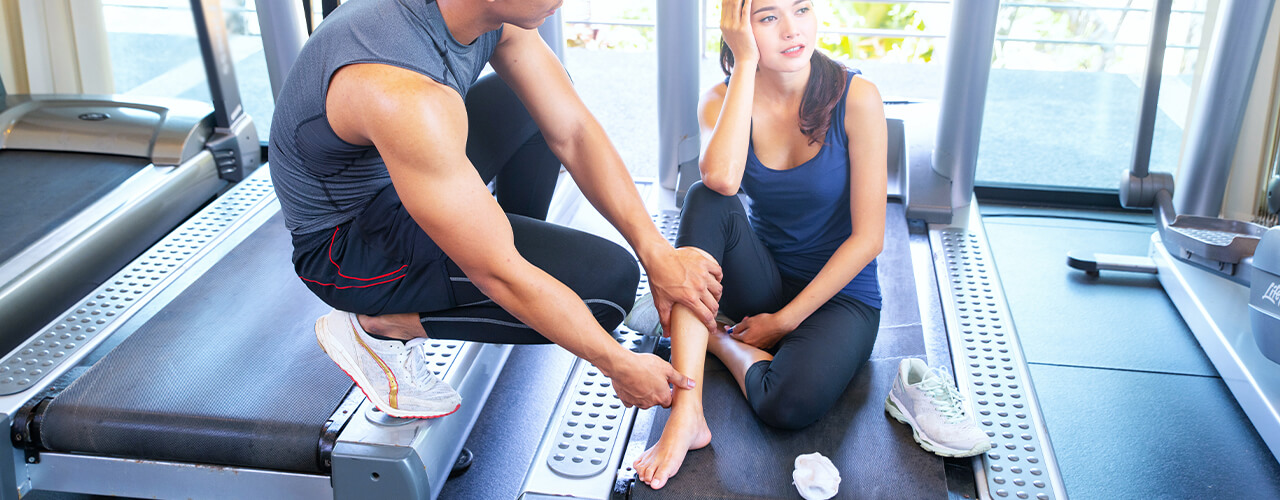What Exercises Do Physical Therapists Recommend For TMJ?
How well do you understand your temporomandibular joint (TMJ)? There’s a good chance you haven’t paid your TMJ much attention unless it’s in distress. These small joints, on the other hand, play an important role in your everyday life. You wouldn’t be able to smile, laugh, speak, or even chew your food without them.
Some conditions cause discomfort in one or both of your TMJs, which may impair your ability to perform these tasks. Fortunately, you can try a few physical therapy exercises right now to see if they help.
- Relaxed jaw exercise
Place your tongue behind your upper front teeth on the top of your mouth. Relax your jaw muscles thus allowing your teeth to fall apart.
- Goldfish exercises (partial opening)
Place one finger in front of your ear, where your TMJ is located, and your tongue on the roof of your mouth. Place your chin on your middle or pointer finger. Lower the jaw halfway and then close it. There should be some resistance, but it should not be painful. Placing one finger on each TMJ while dropping your lower jaw halfway and closing it again is a variant of this exercise. In one sequence, repeat this exercise six times. One collection should be done six times a day.
- Goldfish exercises (full opening)
Place one finger on your TMJ and another on your chin while keeping your tongue on the roof of your mouth. Return your lower jaw to its natural position. Place one finger on each TMJ as you fully drop your lower jaw and back for a variation of this exercise. To complete one set, repeat this exercise six times. One collection should be completed six times a day.
- Chin tucks
Pull your head straight down, making a “double chin,” with your shoulders down and chest up. Hold for three seconds and then repeat for a total of ten times.
- Resisted opening of the mouth
Underneath your chin, position your thumb. Slowly open your mouth, softly pressing against your jaw for resistance. Hold for three to six seconds before slowly closing your mouth.
- Resisted closing of the mouth
Squeeze the chin with one hand’s index and thumb. Place gentle pressure on your chin when closing your mouth. This will aid in the strengthening of the muscles that aid in chewing.
- Tongue up
Slowly open and close your mouth with your tongue meeting the roof of your mouth.
- Side-to-side jaw movement
Place a 14-inch item between your front teeth, such as stacked tongue depressors, and slowly shift your jaw from side to side. Increase the thickness of the item between your teeth as the exercise becomes simpler by piling them one on top of the other.
- Forward jaw movement
In between your front teeth, place a 14-inch object. Bring your lower jaw forward, putting your bottom teeth in front of your top teeth. Increase the thickness of the item between the teeth as the exercise becomes easier.
Are You Looking for Relief From TMJ Dysfunction?
Pace Physical Therapy in San Jose, California specializes in non-surgical neck pain relief and recovery therapies for TMJ Dysfunction. Physical therapy is probably one of the most common interventions for TMJ disorder if you choose to stop taking pain-relieving drugs and use a more holistic method. A thorough examination will be performed on your neck, shoulder girdle, and thoracic spine at your initial consultation with Pace Physical Therapy to decide whether those structures are triggering your symptoms. One of our dedicated physical therapists from San Jose, CA, will then develop a care plan based on the extent of your symptoms and your particular needs. Our physical therapists are patient-centric and committed to your health, working hard to help you manage and eliminate symptoms. If you are in San Jose, CA suffering from the symptoms of TMJ dysfunction, request an appointment at Pace Physical Therapy. Don’t suffer from jaw pain and stiffness any longer.


